#semiarboreal
Text
It's so difficult to get a picture of it, but look at this baby 🖤🕷
#sling #tarantula #tarantulasling #togostarburstbaboon #togostarburstbaboontarantula #Heteroscodramaculata #heteroscodramaculatasling #heteroscodramaculata🕷️ #heteroscodramaculatasofinstagram
instagram
#Heteroscodramaculata#heteroscodramaculatatarantula#tarantulahobby#tarantulakeeper#tarantula#oldworld#oldworldtarantula#semiarboreal#togostarbursttarantula#togostarburstbaboon#sling#Instagram
1 note
·
View note
Text
Old man had a crazy sex session with a hot legal age teenager doxy
Damn new lovers Asian TS Sammy and Gab performs anal sex
Interracial gangbang with white slut Betty Swallocks fucked with BBC
Jerking off with cock sleeve
A MAMADA
puxou calcinha de lado
DFW LATINA CROSSDRESSER HE FUCK ME SO GOOD AND CUM INSIDE ME
German mom fuck Jane Doux in When Father Is Away Stepmom Will Play
Teen Ashlynn Taylor Gets Bent Over And Dicked Down
Super Tight Amateur Anal
#idiogenesis#sarcoplasmatic#poulet#illuviate#rubber-coated#procritique#Moshe#groundneedle#ghostface#modulated#goatfishes#gland's#Galesburg#perigonnia#Soekarno#clumsiness#Melanconiales#exsiccated#Chebanse#semiarboreal
0 notes
Text

Pierogies is a cozy spiral (there’s a heat mat in the roof)
#pierogies#ball python#reptile keeping#bioactive enclosure#pteryx pets#snake#she’s the best noodle#she just figured out that the heat mat is on THAT side of the hammock TOO and that side doesn’t get direct sunlight#she seems to be preferring the hammock to her burrow lately which isn’t super surprising#she loved it in her old tank too and that one didn’t even have heat#and they say ball pythons aren’t arboreal and don’t like climbing. feh#tell that to my snake lol (and also the newer research that’s come out suggesting that they’re actively semiarboreal in the wild)#she climbs literally everything she can reach
1 note
·
View note
Photo
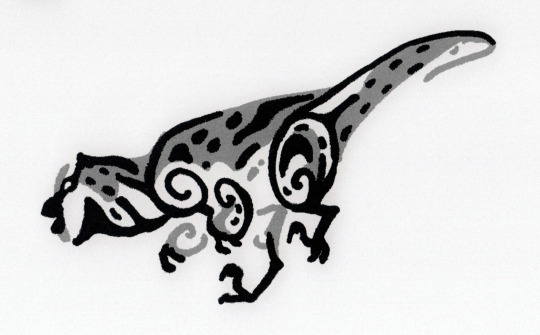


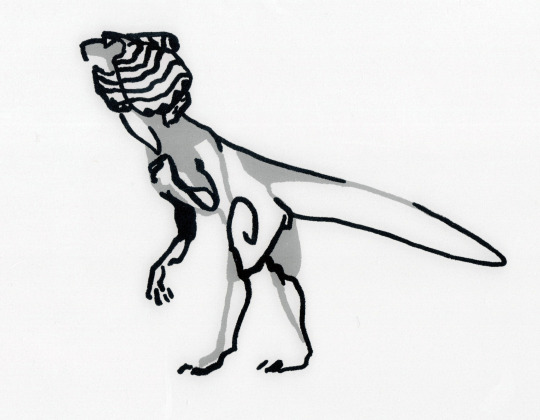
A collection of theropods.
Lesser spotted owlcat, a small, semiarboreal nocturnal predator. Like other owlcats, they hunt by ambush, targeting primarily birds and other flighted small prey.
Bell runner, a goose-sized dromaeosaur which favors small prey and insects. Although they do not hunt in packs, they are social and groups of bell runners can often be seen hunting together in grazed fields.
Bedejou, a large allosaurid native to the open, dry woodland straddling the Zaroub and the Great Lakes basin. The white rings around their eyes grant them a stare that legends describe as petrifying.
Antiole, a species of sapient theropods, the only sapient species of this setting. Antioles are true omnivores and highly social, forming complex societies with a wide variety of languages, social norms, and cultural practices.
#tritone#spec bio#speculative biology#worldbuilding#paleoart#ish#antiole world#antiole#owlcat#dromaeosaur#allosaurus#theropod
1K notes
·
View notes
Text

on topic with the last post
an animal like these guys appeared in a dream last night, they're some sort of sophont macropod on an alternate earth
decided to draw them with my own twist, they were mostly just solid colour in the actual dream, and more fox-like but i wanted them to be a branch of wallabies. i used yellow-footed rock-wallabies as a reference
they're herbivorous like their real life cousins, mostly crepuscular or diurnal, and live in wooded areas, being semiarboreal
they can stand and walk bipedally using their tail for balance, but mostly travel on all fours, standing at about 0.6 meters tall. their long tail is strong and prehensile, used to aid them in climbing or holding and manipulating objects. like other wallabies, they can jump 3 meters in the air and 4 meters forward.
the yellow individual in the image is a juvenile
#spec bio#spec evo#speculative evolution#speculative biology#speculative zoology#sophont#animal art#digital art
149 notes
·
View notes
Text
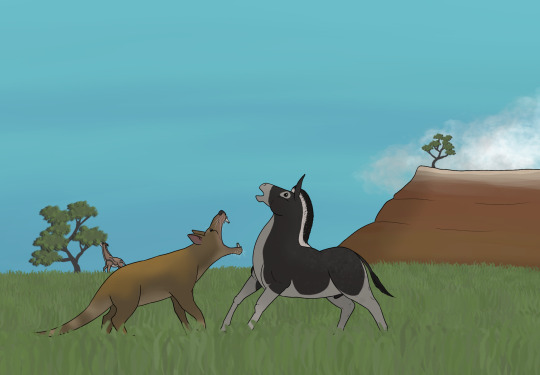
As of now Australia is the fastest moving continent of the planet, going northwards at around 9 cm a year. This rapid movement allowed the Australian ecosystems to shift, thanks also to a wetter and hotter climate.
The dry outback will be greatly reduced, with the shrubland now relegated to just the southwest and the Gibson desert, now replaced by the wetter savannah, while the north and the northeast will be covered in monsoon forests and rainforests, similar to those in Papua New Guinea.
This new landscape will result in a much more varied and diverse landscape, comparable to Africa.
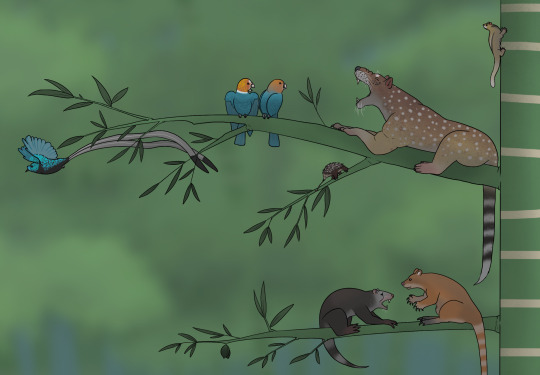
Like in rest of the world the main rainforest trees are bamboo, while dry forests are mostly eucalyptus. On and around these trees lives a great variety of life, including tree-kangaroos, folivorous and frugivorous parrots, birds-of-paradise, echidnas, possums and gliders. The higher trophic levels are occupied by Dasyuromorphs, such as the Leopard quoll (Cyrtonyx pardus), the apex predator of the continent’s forests, and the raccoon like Queensland devil (Bambusarcotherium queenslandi), one of the smallest member of an extremely successful lineage descended from Tasmanian devils reintroduced to the mainland.

Other sarcophilids include the bear-like semiarboreal great glutton (Thylacarctos galactostethus), who’s also the Queensland devil’s closest relative, the pouch hound (Tachythylacoides macropodarium), a specialised cursorial predator that reaches speeds higher than a greyhound, the toothy badger (Hyaenomeles cynicus), a medium sized scavenger and occasional hunter, and the savannah’s apex predator, the sabertooth demon (Thylacobellator deinodon), that wrestles its prey to the ground and rips its throat out.
This predator diversity, similar to that of Africa, is only possible thanks to the great diversity in herbivores, who mostly come from three different lineages: macropods, wombats and, surprisingly, donkeys, being the last surviving perissodactyls of our world.

Although in the Pleistocene there were browsing walking kangaroos, in this epoch their niche will be taken by donkeys, some of whom will come to resemble modern day giraffes, tho most of them will remain fairly similar to their ancestors.
Among them there’s also the first hippo analogue of the continent: the Aussie kelpie or water horse.
Wombats will take the route of their extinct relatives, becoming heavy grazers, while macropods will mostly remain as they are right now, except for some derived wallaroos (the tapiroos), that became faster, to better run from the pouch hounds, shortened their arms, in a similar fashion to abelisaurids, and developed a trunk, in order to cope with their arms, now unable to help them in foraging.
#spec evo#spec bio#speculative evolution#speculative biology#digital art#artwork#worldbuilding#epigene period#future earth
34 notes
·
View notes
Text
*Current* ask game
thanks for the tags @dribs-and-drabbles and @waitmyturtles
Current time: 10:58 (am)
Current activity: I just finished catching up on my Saturday shows (that's Friday shows for most of you) and have friends coming over so I'm procrastinating doing the dishes lol.
Currently thinking about: Said friends coming to visit...but also...

Just ALL the time lol. It's such a fun show.
Current favourite song: ahhhhh either the Only Friends OST (still yes, it's just so good!) Or Choose Your Fighter by Ava Max (from the barbie movie)
Currently reading: Scientific Papers lol Such as: "The skeleton of Congruus kitcheneri, a semiarboreal kangaroo from the Pleistocene of southern Australia." by Natalie M. Warburton and Gavin J. Prideaux. 2021
Ccurrently watching: SO MUCH!! Minato's Laundromat 2, Jun & Jun (if this one finishes well next week it may be my new favourite BL I love it SOO Much), Hidden Agenda Laws of Attraction, My Personal Weatherman, Love Class 2, Only Friends, Love In Translation, Be Mine Superstar, Kiseki: Dear To Me
+ Stay by My side finished today and I finished Wedding Plan yesterday and I am starting Naughty Babe and I Feel You Linger In The Air this weekend...

(Yes I did just watch ToL, next up on the catch up...Why R U Thai)
Current favourite character: of the airing stuf?? because Akk is def my fav and The Eclipse was still recent...otherwise based on Todays feels Lee Hyun (Love Class 2). Or Ray from only friends because he's just soooooooo [insert nearly any phrase here]
Current wip: does learning how to use photoshop count as a WIP?? Lol
tagging: @plantsarepeopletoo, @shouldiusemyname @thegalwhorants @wanderlust-in-my-soul if you want!!
13 notes
·
View notes
Text
fursona spec. zoo

domain: eukarya
kingdom: animalia
phylum: chordata
class: therapsida
order: ophisvillosa ("hairy serpent")
family: theregaledae
genus: theregale
species: theregale montanus ("royal beast from the mountains")
common name: montane forest dragon, or simply a "dragon"
a branch of therapsids that diverged from cynodontia in the late permian. they share many similarities with mammals, both convergent and homologus. they are the only known group of animals to have evolved sapience, other than humans.
their numbers began declining in the early cenozoic due to competition with mammals and eventual over-hunting by humans. it is likely only a few hundred of any given species remain. due to their extreme rarity, dragons have been bestowed great significance in human folk-lore, and are highly sought after for trophy hunting.
t. montanus (referred to as "dragon(s)" going forward) is a semiarboreal generalist feeder. their historic range includes much of the rocky mountains. they can be anywhere from 4 feet to 7 feet tall when standing on their hind limbs & necks in a neutral posture. bipedal and digitigrade, though they will often switch to a quadrupedal gait for brief but fast sprints.
dragons are furred, with the structure being practically identical to mammalian hair. their fur is the softest of any known animal, and is even rumored to induce minor euphoria if touched.
individuals can range anywhere from a vibrant brown to a dull grey, and are typically striped or "ticked". pups have a characteristic spot & rosetted pattern. in rare cases these spots will carry over into adulthood as a form of neoteny.
dragons are omnivorous, typically scavengers but will opportunistically hunt prey. due to their very high internal body temperatures, dragons are able to freely feed on carrion without contracting illness, though this temperature requires many excess calories to maintain. their favorite foods include fish, fruits, nuts, and small mammals.
their primary senses are vision, smell, and hearing. rather than the complex nasal cavities of mammals, dragons have convergently evolved a tongue very similar to that of squamates, which flicks outside the mouth almost constantly. the tongue is used both for smelling (of which the fork can differentiate the direction of any given smell), and for sensory purposes, as dragons lack facial whiskers.
dragons possess keratinized display structures that are flamboyant in color. this includes their horns, claws, ears, and scutes (boney plates, embedded in the skin, that run along the dragon's limbs). as the bright coloring only develops during sexual maturity, these are likely to advertise to potential mates.
dragons communicate through clicks, whistles, and squeaks, though they are capable of learning human language. body language is communicated primarily through their ears and tail-flagging. they will wag their tail if excited, flick it if annoyed, etc.
dragons possess "mammary" glands, 2 pairs in total, with some distinctions from true mammary glands in their internal anatomy, along with the highly flexible lips required to drink from said glands. dragons will raise their young, litters of 1-3 individuals, until they are able to fend for themselves in about a decade and a half. newborn pups are only a few inches long and covered in downy fluff.
rapid fire:
long neck that can extend and retract

bird-like feet with reversed first toe, adept at climbing trees
opposable thumb for Grabbin
uses the shadow of their tail to attract fish
im autistic btw ok bye <3
18 notes
·
View notes
Text
Every animal I can think of that has Hands is at least semiarboreal. Primates. Squirrels. Raccoons, tanuki, possums. Rats and mice, some are tiny enough that climbing tall grass counts.
Anyway. Uh. Fossils is where I was going with this.
4 notes
·
View notes
Photo

Harmony IV: Chilobothris striatus
The Dominican or Hispaniolan red mountain boa is a semiarboreal snake that can reach 4-6 ft as adults. While usually a rich rust brown, some individuals can be a remarkable bright orange or blood red!
And with that, the series is finally done! It took way longer than I hoped, and was extremely trying at times, but I am incredibly proud of the results and I learned a lot about my watercolor technique.
5x5 watercolor on Aquabord. 2022.
Prints available here, and original available soon (currently waiting to be varnished)!
#wildlife art#wildlife#dominican red mountain boa#reptile#reptiles#reptile art#herpetology#herpetoculture#ash draws#personal work#color#watercolor#mixed media#animals
6 notes
·
View notes
Text
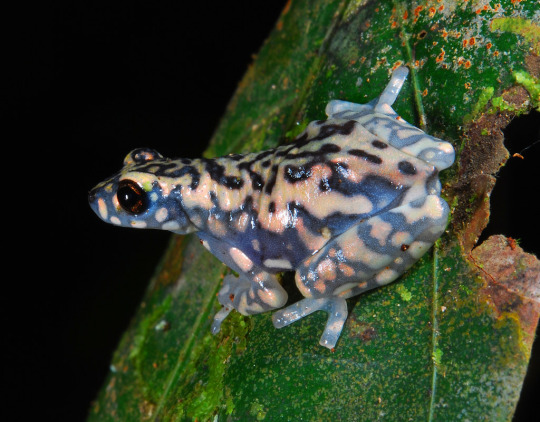
today’s funky frog of the day is: allophryne ruthveni! commonly known as the tukeit hill frog, they live in guyana, venezuela, surinam, brazil, and bolivia. they were discovered at tukeit hill in guyana. they are small frogs that are either yellow with black spots, or black with yellow spots. they are semiarboreal, spending some times low in the trees, and some of the time on the ground. they are explosive breeders, taking advantage of small water ponds formed on the forest floor after periods of rain. these frogs inhabit sparse forest, and may be restricted to forested areas, avoiding cleared land. their lifespan is unknown.
407 notes
·
View notes
Photo

Here's my finished tamandua. Tamanduas are smaller relatives of the giant anteater. They are semiarboreal and have partially prehensile tails. They give off a strong smell to mark their territory and are sometimes called "stinkers of the forest".🙊 They're also pretty clumsy when they move around which makes them fun to watch. Go check out some videos.😊 This guy will be joining my shop update on Sunday. Happy first day of spring!🌷 . . . #tamandua #lesseranteater #anteater #southerntamandua #southamericanwildlife #fibreartist #woolart #arttoy #softsculpture #kawaiiart #sculpture #biodiversity #wildlifeart #madeintoronto #wildwhimsywoolies
#tamandua#wildwhimsywoolies#southamericanwildlife#biodiversity#fibreartist#woolart#softsculpture#anteater#lesseranteater#sculpture#madeintoronto#kawaiiart#southerntamandua#wildlifeart#arttoy
15 notes
·
View notes
Photo

Look at my semiarboreal snake sleeping on a branch for the first time in her life... #snakeshaming
135 notes
·
View notes
Photo

Bothrops asper
Common name: fer-de-lance
Bothrops asper is a venomous pit viperspecies ranging from southern Mexico to northern South America. Sometimes referred to as the “ultimate pit viper”, these snakes are found in a wide range of lowland habitats, often near human habitations. Its proximity to human habitations is likely the reason why it is considered more dangerous to humans than others. This species is the main cause of snakebite incidents within its range. No subspecies are currently recognized.
Venom
This species is irritable and fast-moving. It is also regarded as being more excitable and unpredictable than B. atrox. Its large size and habit of raising its head high off the ground can result in bites above the knee. It has also been observed to eject venom over a distance of at least 6 ft (1.8 m) in fine jets from the tips of its fangs.
Bite symptoms include pain, oozing from the puncture wounds, local swelling that may increase for up to 36 hours, bruising that spreads from the bite site, blisters, numbness, mild fever, headache, bleeding from the nose and gums, hemoptysis, gastrointestinal bleeding, hematuria,hypotension, nausea, vomiting, impaired consciousness and tenderness of the spleen. In untreated cases, local necrosis frequently occurs and may require amputation. In 12 fatal cases, the cause of death was sepsis, intracranial hemorrhage, acute renal failure with hyperkalemia and metabolic acidosis and hemorrhagic shock.
Behavior
This species is nocturnal and solitary. It is less active in colder and drier periods. B. asper is often found near rivers and streams, basking under the sun during the day and lying still while well camouflaged in leaf litter or under forest cover waiting to ambush prey (including rats and mice) that comes within range during the night. When cornered or threatened, this species can be very defensive and may exhibit an S-coiled defense display. Juveniles are often semiarboreal and even adults are sometimes encountered in bushes and low trees. Juveniles are also known to exhibit caudal luring, a use of their differently colored tail tips to lure prey. Although both males and females display this behavior, only males have bright coloured tail tips.
Compared to the common lancehead, B. atrox, these snakes have been described as excitable and unpredictable when disturbed. They can, and often will, move very quickly, usually opting to flee from danger, but are capable of suddenly reversing direction to vigorously defend themselves. Adult specimens, when cornered and fully alert, should be considered dangerous.
https://en.m.wikipedia.org/wiki/Bothrops_asper
3 notes
·
View notes
Text
rainbowsnakes answered your question “Curious: How much do dumerils boas like to climb?”
I have an MGB, I couldnt find any info on how much they climb so I went to youtube and looked for footage of them in the wild. Found quite a few videos of them climbing really well! They also looked a lot leaner than the ones I'd seen in captivity.
full-flighted answered your question “Curious: How much do dumerils boas like to climb?”
I don't own one, but they do spend a lot of time in the trees and are semiarboreal.
Thank you! I will have to check out some of those videos, I didn’t think to look in that direction...
I may be getting a potential enclosure from a friend that would be best suited for a semiarboreal snake. I’m trying to come up with some animals that will do well in the enclosure and that I am also prepared to care for. I’ve wanted a dumeril’s for awhile, so I’m glad that the setup wouldn’t cross that off the list. Though it’s going to make it harder for me to decide on a snake :P
I appreciate the input!
#rainbowsnakes#full-flighted#there's five or six snakes on the list lol#so im going through a ton of care sheets to see what the best fit for me is#definitely excited to work with something other than a ball python tho#even if its going to be several months at least before i can even consider purchasing an animal
2 notes
·
View notes
Text
Sailfin Dragon Lizards From your Philippines
The Philippine sailfin lizard is a wonderful swimmer and has flattened toes which allow it to run across h2o. It is omnivorous, giving on fruit, leaves, plants, insects, as well as small animals . It life near estuaries and rivers in the exotic forests from the Philippines. Men have a larger crest on their own back compared to females. The particular males furthermore show a violet shade as they age group. Females are usually less colorful.
The Philippine sailfin lizard lives mainly next to water, at the.g., estuaries and rivers, riverbanks, rice-fields, etc., because these lizards want to swim. The adults may possibly reach up to a metre in length. Due to confusion along with H. amboinensis, the precise distribution inside the Philippines is uncertain, but northern populations are generally regarded as H. pustulatus as well as southern regarded H. amboinensis.
Sailfin dragons intrigue anyone considering dinosaurs. These prehistoric-looking reptiles endowed along with spikes and crests are truly spectacular beasts. Men also have a huge fanlike sail herniated from the bottom of the tail. Several herpkeepers quickly love them. However, sailfin dragons aren’t for everyone. They require large, semiarboreal enclosures, therefore only those ready to offer suitable room must look into keeping sailfin dragons.
Sailfin dragons haven't been common in the dog trade. These folks were more available in the late 1980s and also early 1990s when the Belgium exported them, but the country has because protected the actual lizards and stopped their particular export.
Sailfin Dragon Foods
Omnivorous by nature, sailfin dragons consume just about anything considered to be edible and also healthy. Infants should be provided as often as they feel the need to eat. Try pests (such as crickets, superworms, cockroaches and Phoenix Worms) each morning, and dust insects with calcium and vitamin D3. Leave a bowl associated with finely chopped fruits and vegetables (including cantaloupe, bananas, berries, collard greens, mustard vegetables, carrots, beans and passable flowers) in most day. Industrial bearded dragon pellets are an excellent addition. Toward evening try feeding a lot more dusted, gut-loaded insects.
Because sailfin dragons mature, stick with the same diet and supplementation, and calcium dusted insects, but add more selection, such as small mice, soil turkey, thoroughly clean fish, crustaceans, shrimp and also crawfish. Increase the calcium if keeping ovulating females and nutritional vitamins added as soon as to two times weekly for the diet.
click here now to get more information about sailfin dragons.
0 notes